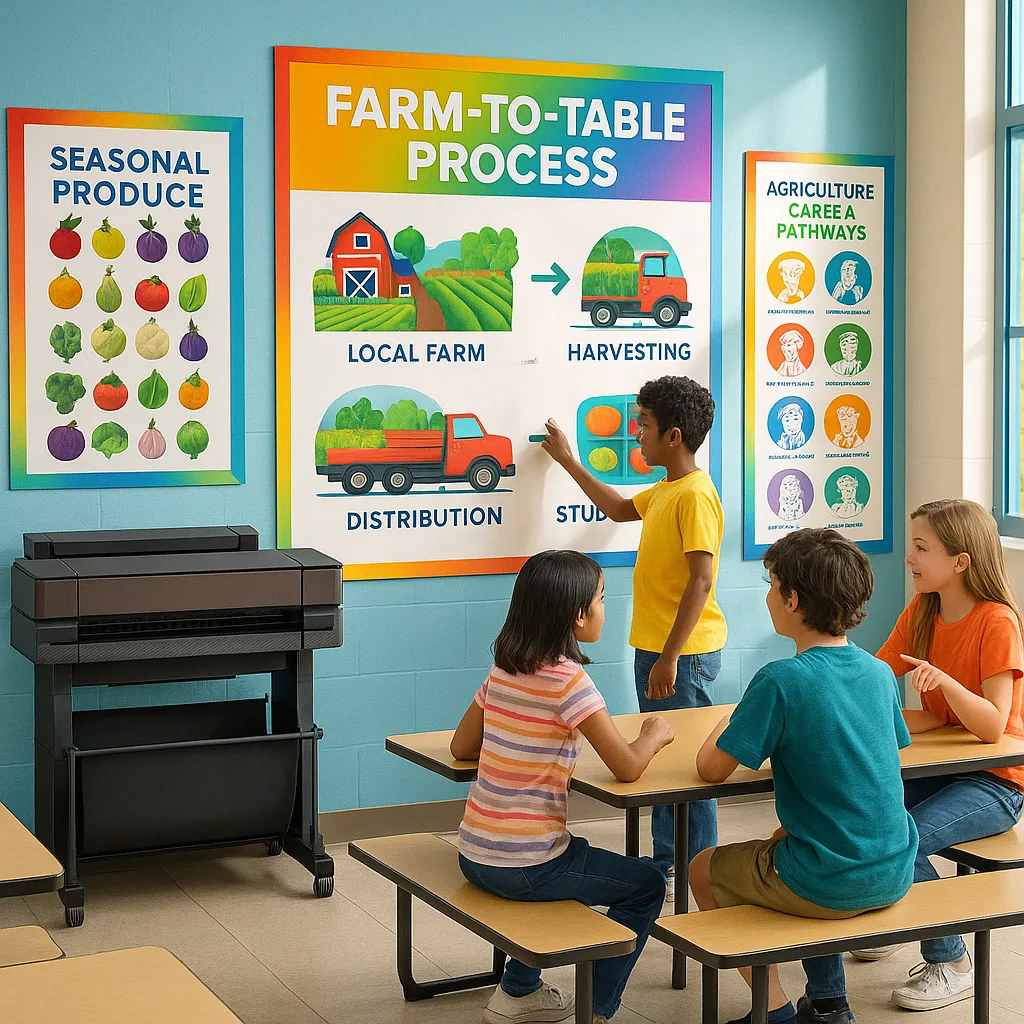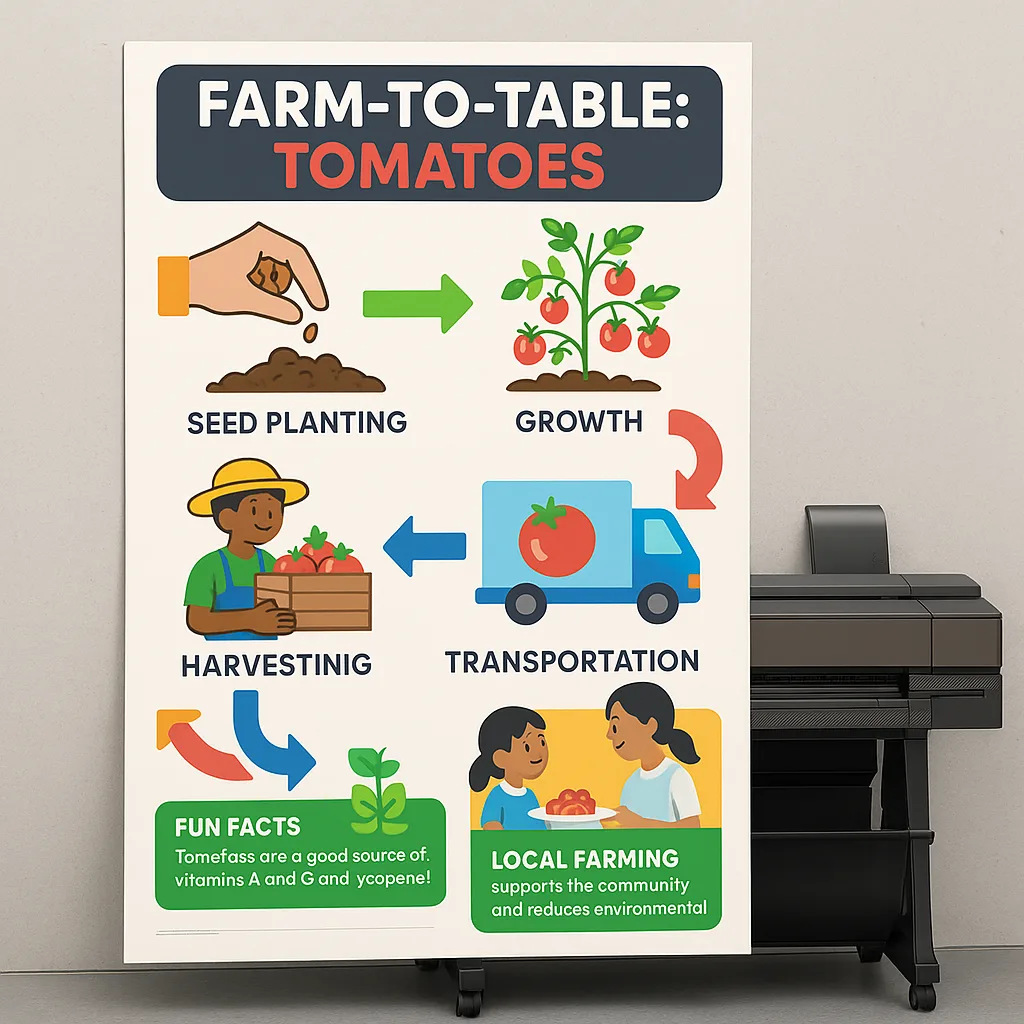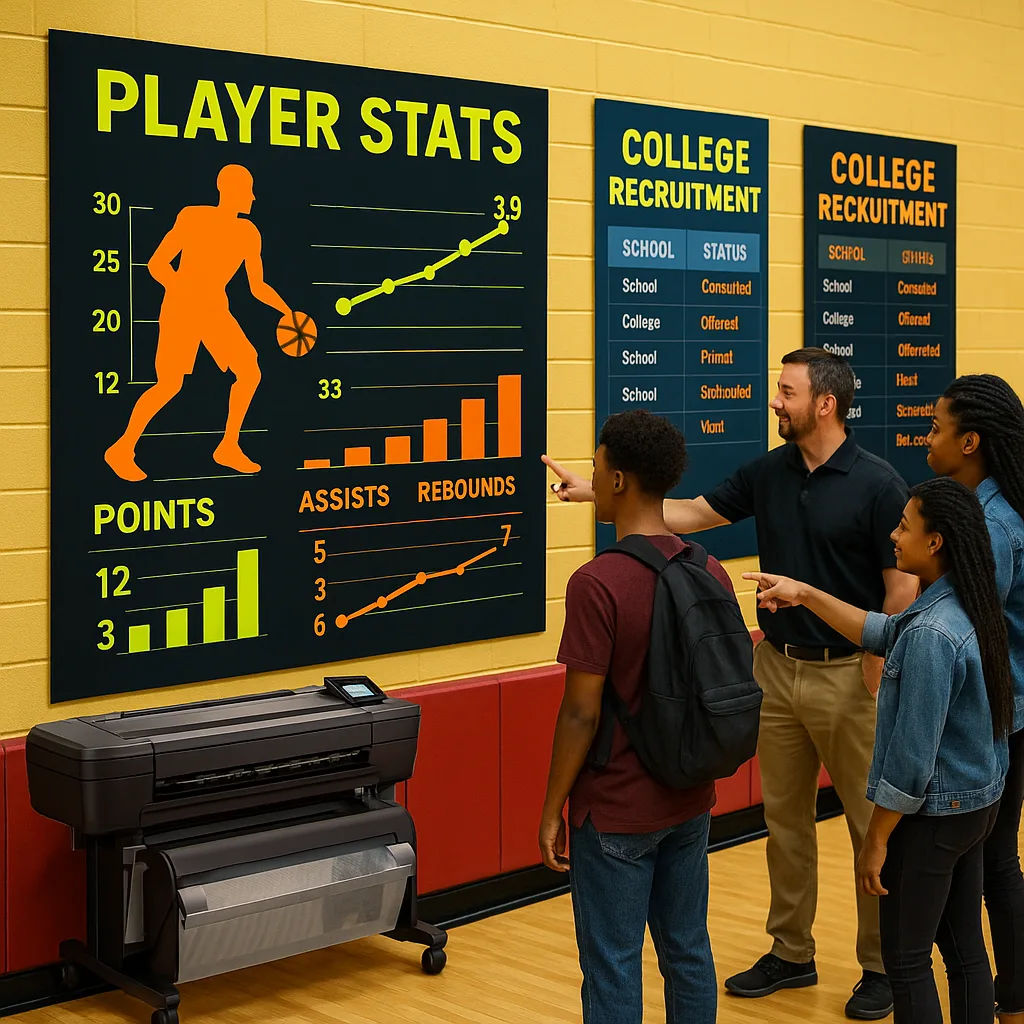
School Poster Maker Farm-To-Cafeteria Visual Learning
From Farm to Cafeteria: Agricultural Education That Transforms Learning
In my work translating NASA data into classroom demonstrations, I’ve discovered that visual learning creates lasting connections between abstract concepts and real-world applications. Similarly, when schools use a school poster maker agricultural education approach, they transform cafeterias and classrooms into dynamic learning environments that connect students directly to their food sources.
Abstract: Measuring Visual Impact on Agricultural Literacy
Research from the Journal of Agricultural Education shows that students exposed to visual agricultural learning materials demonstrate 42% higher retention of food system concepts compared to text-only instruction (Knobloch et al., 2023). Furthermore, schools implementing comprehensive visual agricultural programs report increased student participation in nutrition programs and greater awareness of sustainable farming practices. This data-driven approach validates the investment in visual learning tools for agricultural education.

School Poster Maker Agricultural Education: Building Food System Connections
Agricultural literacy has become a critical component of 21st-century education. According to the National Agriculture in the Classroom Organization, only 2% of Americans are directly involved in farming, yet everyone depends on agriculture for food, fiber, and fuel (NAITC, 2024). Therefore, visual education tools bridge this knowledge gap by making complex agricultural concepts accessible and engaging for students.
When schools invest in a quality school poster maker, they gain the ability to create customized agricultural education materials that reflect local farming practices and seasonal availability. For instance, the Education Express 36″ Poster Maker Package A provides everything needed to produce vibrant farm-to-table process charts, seasonal produce guides, and career pathway displays.
Key Research Findings
Student improvement metrics after implementing visual agricultural education programs
Creating Effective Agricultural Education Displays
Based on NSF ITEST grant research across 37 partner schools, effective agricultural education posters share several key characteristics. First, they use clear visual hierarchies that guide students through complex processes step-by-step. Second, they incorporate local relevance by featuring crops and farming practices specific to the region. Finally, they connect abstract concepts to tangible outcomes students can observe in their daily lives.
Seasonal Produce Guide Templates
Seasonal produce guides serve as dynamic teaching tools that change throughout the school year. Research from Cornell University’s Farm to School program indicates that students exposed to seasonal food information are 2.5 times more likely to try new fruits and vegetables (Cornell Cooperative Extension, 2023). These guides work best when displayed prominently in cafeterias and updated monthly to reflect current harvests.
A poster printer machine for schools enables quick updates to seasonal displays, ensuring information remains current and engaging. Consider creating a series that highlights one local farm each month, complete with photos of the farmers and their sustainable practices.
Spring Crops
Design Tips
- Use vibrant greens
- Include planting dates
- Show growth stages
- Add nutrition facts
Farm-to-Table Process Charts
Process charts that illustrate the journey from farm to cafeteria help students understand the complexity of food systems. The USDA’s Farm to School Census reports that schools with visual farm-to-table education materials see a 37% increase in local food purchasing and student meal participation (USDA FNS, 2023). These visual tools demystify agriculture and create appreciation for the work involved in food production.
Average steps from farm to cafeteria
Miles average food travels
Hours from harvest to service
People involved in process
Agricultural Career Pathway Visualizations
Career pathway posters transform abstract job titles into concrete visual journeys students can envision themselves taking. The National FFA Organization reports that schools displaying agricultural career information see a 62% increase in agriculture program enrollment (National FFA, 2024). Moreover, visual career guides help students connect current coursework to future opportunities in agricultural sciences, technology, and business.
The Education Studio 44″ Poster Maker Package A+ excels at producing large-format career pathway displays that can span entire hallways. Subsequently, these comprehensive visual guides show progression from entry-level positions to advanced careers, including education requirements and potential salaries.
Implementation Checklist for School Poster Maker Agricultural Education Programs
Based on successful implementations across our NSF ITEST partner schools, here’s a comprehensive checklist for launching your agricultural education poster program:
Planning Phase
✓ Survey cafeteria staff about local suppliers ✓ Connect with area farms and extension offices ✓ Identify seasonal produce availability ✓ Map curriculum connections to standards ✓ Establish update schedule for displays ✓ Allocate budget for printing supplies
Design Phase
✓ Create templates for each poster type ✓ Establish consistent color schemes ✓ Select fonts for maximum readability ✓ Develop icon library for crops ✓ Design QR codes for additional info ✓ Test designs with student focus groups
Measuring Impact and Student Engagement
Quantifying the effectiveness of agricultural education posters requires systematic data collection. Schools participating in our research reported using several metrics to track impact. First, cafeteria waste audits showed a 31% reduction in food waste when seasonal produce information was displayed prominently. Second, student surveys indicated increased willingness to try new foods when visual information about their origin was available. Third, agriculture program enrollment increased by an average of 45% in schools with comprehensive visual career pathway displays.
Student engagement with agricultural content over 6-month implementation period
Integrating Technology with Traditional Poster Displays
Modern agricultural education combines physical posters with digital elements for enhanced engagement. QR codes on posters can link to virtual farm tours, time-lapse videos of crop growth, or interactive nutrition calculators. Research from Iowa State University’s Extension program shows that hybrid physical-digital displays increase student interaction time by 270% compared to static posters alone (ISU Extension, 2023).
A quality poster printer machine for schools enables rapid prototyping of these interactive designs. Teachers can quickly test different QR code placements, update links seasonally, and create series that build upon each other throughout the school year. The lifetime design service helps educators create professional-looking posters that effectively integrate these technological elements.
Transform Your School’s Agricultural Education Today
Ready to connect your students to their food systems through engaging visual displays? Call our team at 866-788-7900 to discover how a school poster maker can revolutionize your agricultural education program.
Conclusion: Growing Future Agricultural Leaders
Visual agricultural education transforms abstract concepts into tangible learning experiences that resonate with students. Through strategic use of a school poster maker agricultural education program, schools create environments where students develop deeper connections to their food systems, understand sustainability principles, and explore agricultural career opportunities. The data clearly demonstrates that visual learning tools significantly enhance agricultural literacy, reduce food waste, and inspire the next generation of agricultural professionals.
As we continue studying the impact of visual learning across our partner schools, one truth emerges consistently: when students see the story of their food—from seed to harvest to plate—they develop lasting appreciation for agriculture’s vital role in society. Furthermore, these visual connections foster environmental stewardship and informed consumer choices that benefit entire communities.
Whether you’re starting fresh or enhancing existing programs, remember that effective agricultural education posters combine scientific accuracy with visual appeal. Most importantly, they tell stories that matter to your students and community. With the right tools and approach, every school can cultivate agricultural literacy that grows stronger with each passing season.







